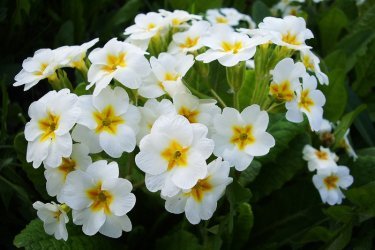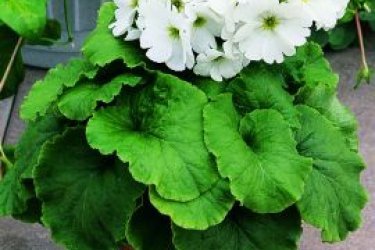Primrose
This plant with amazingly bright flowers is grown as an indoor and garden plant. Primrose is a primrose; its amazing buds bloom in the spring, one of the first in the garden.
Types and varieties
There are more than four hundred varieties of primrose; these are wild flowers and garden beauties that can compete with many plants traditionally planted in flower beds.
Of the huge variety of species, only 4 are grown as indoor crops. Most often these are stemless primroses; they are easily identified by the presence of a bright yellow “eye”.
Reverse conical, or German and multiflora English are distinguished by their long stems and long flowering period.
Rules of care
Primrose does not require special care, but to get abundant bright flowering it is recommended:
- keep the plant at a temperature from + 10 C to + 20 C, i.e. in a cool room;
- Water frequently; the plant loves moist soil;
- For fertilizing, use universal fertilizers; fertilizing should not be carried out frequently;
- The lighting should be bright, but it is better to exclude the possibility of direct sunlight hitting the bushes.
The best soil for planting is violet substrate. There is no special need to replant the plant.
In the conditions of the southern regions, garden primrose is grown in open ground as a summer plant; in the conditions of the middle zone, perennial primrose is grown, but its life expectancy is short.
Reproduction of primroses
Primrose is propagated by sowing seeds.If primrose is grown for sale, the seeds are sown in the summer using cool greenhouses.
At the beginning of winter, such a plant will be ready for sale.
Primrose in a pot
Caring for the plant also involves abundant watering and plucking faded buds.
With the onset of summer heat, primrose can be planted in open ground, in a semi-shaded space. The area should be damp, but without stagnant water.
Primrose is usually used to create borders, mixborders, and as a decoration for rock gardens.
When planting, bushes should not be placed at a distance of less than a quarter meter from each other.
What problems may arise
Often, darkening of the opened flowers is observed on the reverse-conical primrose; this is a natural process; for the appearance of new buds, it is necessary to systematically remove the fading ones.
As a result of keeping the plant at high temperatures, flowering may be reduced to several days. It’s not difficult to correct the situation; it’s enough to take the flower pots out into a cool room at night.
If the tips of the leaves are darkened and wrinkled, it means that salt deposits have accumulated in the pot. You will need to rinse the soil in the pot, spilling it with clean water.
Exposure to too dry air may cause wilting of leaves and flowers. It is recommended to remove the pot with the plant from a sunlit place, and the soil should not be allowed to dry out.
Growing primrose is not a difficult task; even an inexperienced gardener can admire its amazing blooms if desired.



